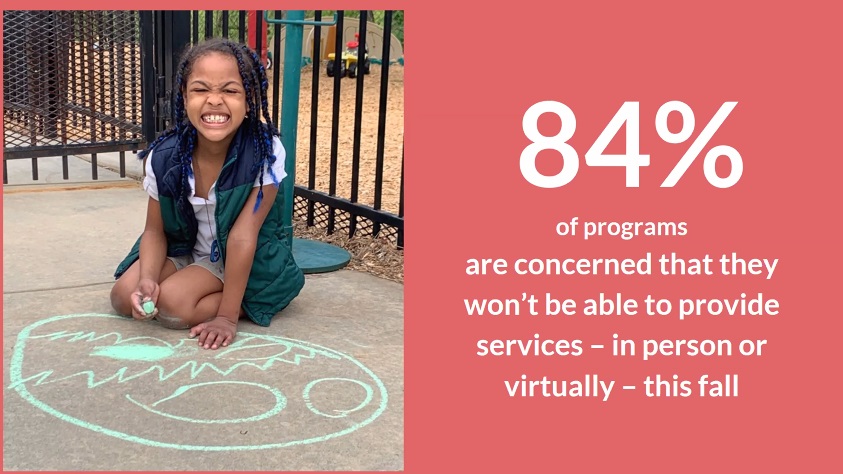
Screenshot
“As we serve our children, we need more resources, not less,” said Afterschool Alliance Executive Director Jodi Grant in a virtual briefing on Thursday. She said after-school providers are operating with unclear mandates and uncertain budgets.
Since the COVID-19 epidemic hit, after-school programs have stepped up to be an important community resource, but many organizations fear they can’t meet the needs they see coming this fall, according to a survey released last week by the Afterschool Alliance.
Fifty-six percent of providers said they were very concerned about whether they could offer services in the fall, and another 28% were somewhat worried.
The concerns voiced at a virtual gathering hosted by the Alliance on Thursday centered around funding, lack of staff and lack of guidance, as well as lack of flexibility in the federally funded, state-administered 21st Century program.
States need to issue guidelines allowing 21st Century program flexibility to meet the changing school landscape, said Jodi Grant, executive director of the Afterschool Alliance.

Screenshot
Afterschool Alliance Executive Director Jodi Grant
“They need to make it clear that after-school programs [with federal funding] can operate in these uncertain times at different hours,” Grant said. Such programs serve nearly 2 million children and youth across the nation, mostly in high-poverty communities.
Schools will be operating in unprecedented ways this fall, many online only and others with unusual scheduling. After-school programs will be needed to provide expanded services and supports.
The survey of after-school providers conducted May 28 through June 30 had 914 respondents representing more than 6,000 after-school program sites. One-fifth of the providers were caring for the children of essential workers at the time of the survey.
At the beginning of the summer, 61% expected to offer summer programming with roughly one-third of the programs in person, one-third virtual and one-third a hybrid form.
But 88% said they were concerned that the new environment in the pandemic requiring social distancing, different student/staff ratios and special cleaning would make it cost-prohibitive to operate.
“After-school programs have been operating all day long trying to meet the needs of kids,” Grant said. “We’re seeing these programs struggle.”
Nearly half of providers said they have had to lay off or furlough some staff. However, nearly three-fourths of providers were continuing operations during the pandemic either in-person or virtually.
Half the programs surveyed were funded through the 21st Century initiative. Nearly one-third were funded by parent fees.
Grant said that fee-for-service providers were the hardest hit financially.
At the virtual town hall, Tony Yungeberg, community education director at Valley Heights Unified School District in Waterville, Kansas, said a major need of his after-school program was more space to accommodate the social distancing and enhanced cleaning required.
Miguel Garcia, director of Fort Worth Afterschool for the Fort Worth (Texas) Independent School District, said staffing was an issue. His program has lost staff when it particularly needs those who are willing to reach out and connect remotely and regularly with kids, he said.































